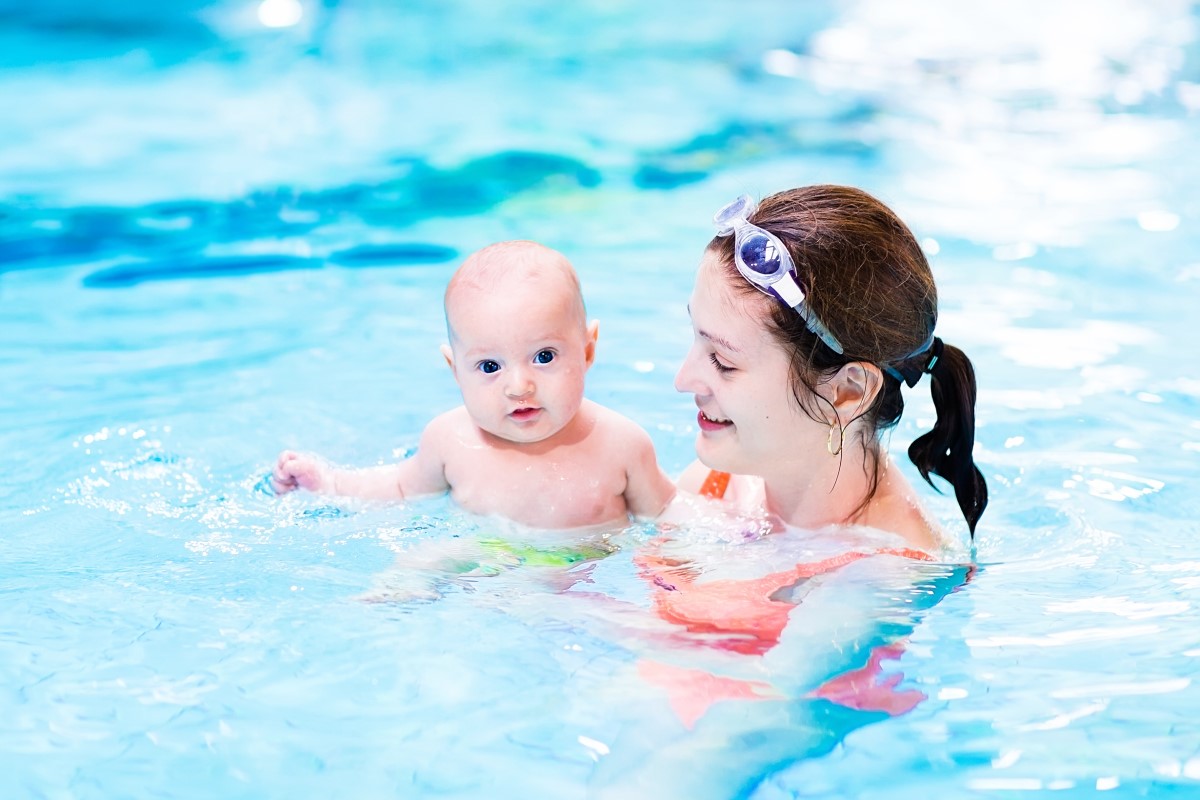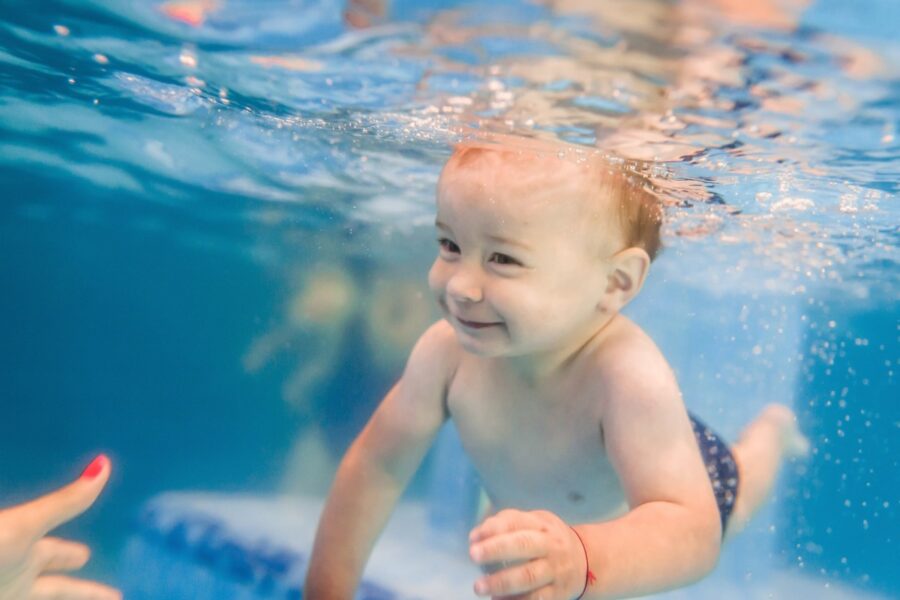
Swimming with your baby is a fun bonding experience for both of you. The two of you can swim safely as long as you’re vigilant, attentive and informed. You can take your baby swimming before they get their immunization shots, but there are a few things to consider.
At What Age?
Babies are curious about water and you can safely take your baby swimming as early as three months old. It’s important to introduce your baby to water before and after in-pool swim lessons. Practice floating in the bathtub slowly and gently, gliding your baby through the water as they float.
How Can I Get my Baby Excited about Swimming?
You should make learning to swim fun for your little one. Incorporating songs and games into swim lessons makes jumping in the pool something to look forward to. Bath time is a good way to introduce little ones to the water. Try some of our techniques to make bathing and swimming even more enjoyable.
Public Pools are a No-No…
Keep your baby out of public pools until they’re six months old. Public pools are crowded and noisy and the water temperature is out of your control.
A safe water temperature is lukewarm because babies cannot regulate their body temperature like adults can. The ideal pool temperature for a newborn baby is approximately 90-92℉. Water that is too warm/hot is also dangerous for babies as it can cause lightheadedness, muscle spasms and vomiting. Keep infants out of hot tubs.
Babies can’t regulate their body temperature like adults can.
Public pools also contain more bacteria and other contaminants (sweat, urine, etc.) because of the high amount of traffic public pools get. Warm water at public pools allows bacteria to breed. Watch your baby for signs of illness and discomfort during and after being in a pool.
After nine months in a perfectly regulated environment like the womb – your baby has to learn to regulate their body temperature. It takes a while for this ability to develop. During this time, you should monitor your baby in and out of the pool. Follow these guidelines when deciding how many layers your baby needs and what clothes, blankets and accessories to buy your new baby.
Indoor pools are ideal because you can control room and water temperature. If your home pool is outdoors, pick a hot day that isn’t too windy, so your baby stays warm under and out of the water. Make sure you have plenty of fluffy towels to wrap your baby up in when it’s time to get out!
Eliminate Risk Factors
You should be wary of a few things when it’s time to decide to take your newborn swimming. Eliminate potentially dangerous fatal risk by paying attention to the follwoing:
- Illnesses (both others and your baby)
- Rinse yourself and your baby before and after getting into the pool to reduce pool irritants
- Feed one to two hours before the swim lesson
- Be vigilant, never leave your baby unsupervised near water, even for a few seconds
- Chlorine is safe for babies
Take the necessary precautions while being vigilant and attentive to swim safely with your newborn baby. Infant swimming is a great way to bond with your child In our hectic, fast-paced world, flowing down to enjoy the little things is essential — for us and our kids!



